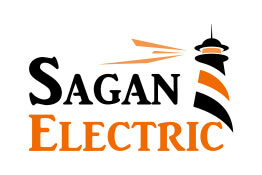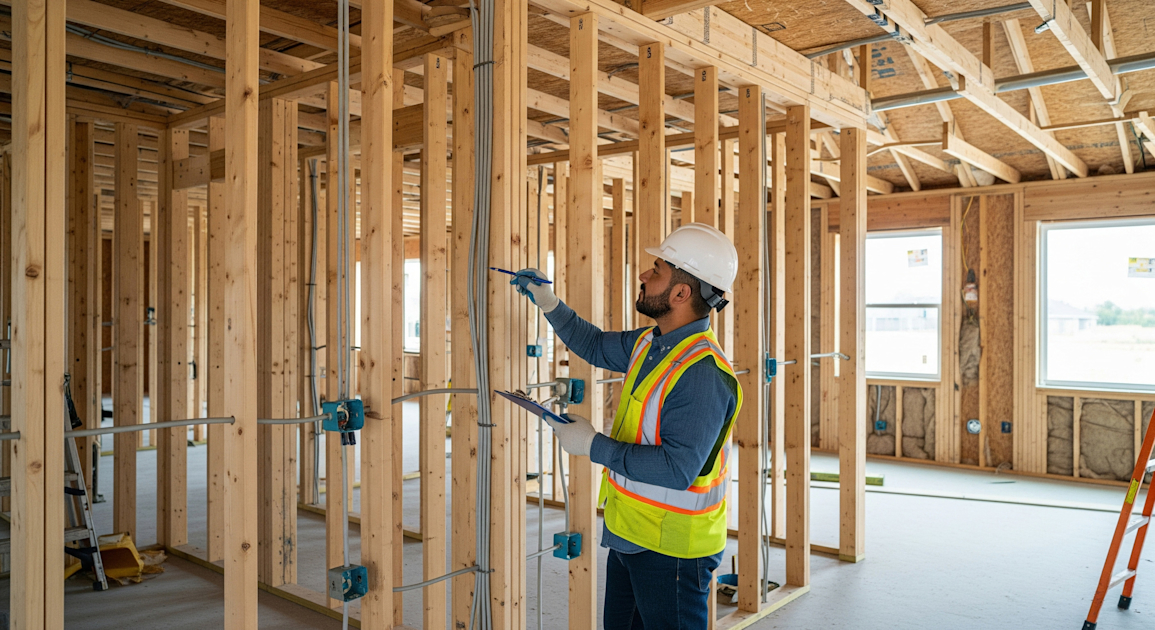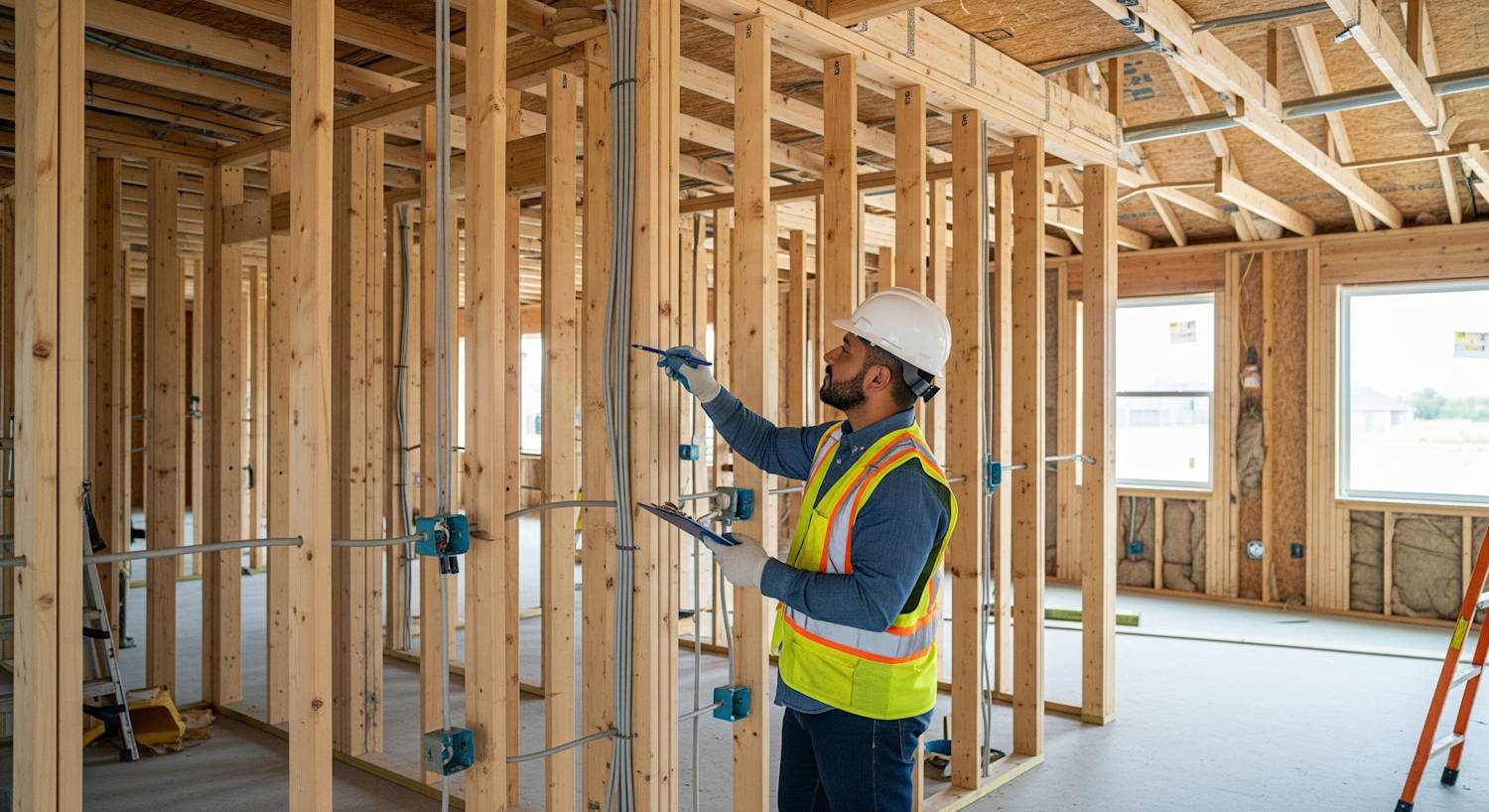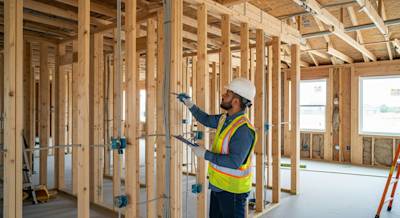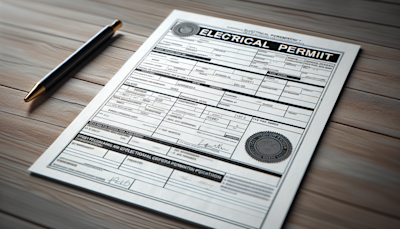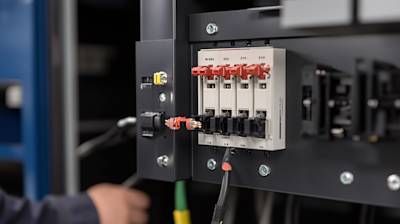Home construction or renovation can often be a complex and complicated process, particularly when it comes to the electrical aspect. One essential step that homeowners, builders, and contractors shouldn't overlook is the electrical rough-in inspection. This blog post will take an in-depth look at this process, helping you understand its ins and outs, importance, and how to prepare for it.
What is Electrical Rough-In Inspection?
An electrical rough-in inspection is a crucial stage in the overall electrical installation process. It occurs after the installation of electrical boxes, cables, and conduits but before the drywall or insulation is installed. This inspection aims to ensure the electrical systems are safe, correct, and comply with the National Electrical Code (NEC) and local building codes.
While every jurisdiction may have slightly different specific requirements, the general aim of the electrical rough-in inspection is to check for safety, proper functionality, and adherence to established standards.
Why Are Electrical Rough-In Inspections Necessary?
These inspections are necessary for several reasons:
- Safety: Electrical rough-in inspections aim at identifying and mitigating any potential dangers or fire hazards. These inspections seek to ensure that the electrical system will operate safely, which is critical in preventing cases of electrocution or property damage by an electrical fire.
- Code Compliance: One key aspect of the inspection is to review whether the installed electrical structures comply with NEC and state or local codes. Non-compliance may lead to fines or even delay the construction process.
- Quality Assurance: These inspections also serve as a form of quality control, ensuring that the work performed is up to standard. A thorough review can bring to light any issues, errors, or omissions.
Preparing for an Electrical Rough-in Inspection
Being prepared can ease the inspection process, speed up work, and help avoid unnecessary rework. Below are some of the key elements an inspector will check during electrical rough-in inspection.
Proper Box Installation
Inspectors will be looking at your box installations, ensuring they are secured well and set at the right depth. Whether it is an outlet, switch, or circuit breaker box, each should be mounted securely.
Proper Cable and Conductor Sizing
The inspector will check to ensure that all circuits have the right size of cables and conductors. The NEC sets out guidelines on what size of the conductor should be used for what size of the circuit to prevent overheating and potential fires.
Correct Grounding
Proper grounding is critical for safety. The inspector will confirm there is grounding in all required places, including receptacles and metal boxes.
Correct Wiring
The inspector will look at how wires have been run, ensuring they are not stapled too tightly, run through sharp edges, or run too close to the home's hot areas like chimneys or heating ducts.
Key Steps in an Electrical Rough-In Inspection
Here is a step-by-step guide to what you can expect during this process:
Preparation: This involves ensuring all electrical boxes are inset into the studs and properly affixed, and wires and cables are well run.
Inspector’s Walkthrough: An inspector walks through the site, carefully examining every aspect of the electrical installation.
Cross-Checking Requirements: The inspector cross-references the on-site installation with NEC and local code requirement.
Sharing Results and Recommendations: Once the inspection is complete, the inspector will share the findings immediately or offer a written report shortly after. If everything meets the code standards, you get a green light to proceed, but if not, you are required to correct the issues and get a re-inspection.
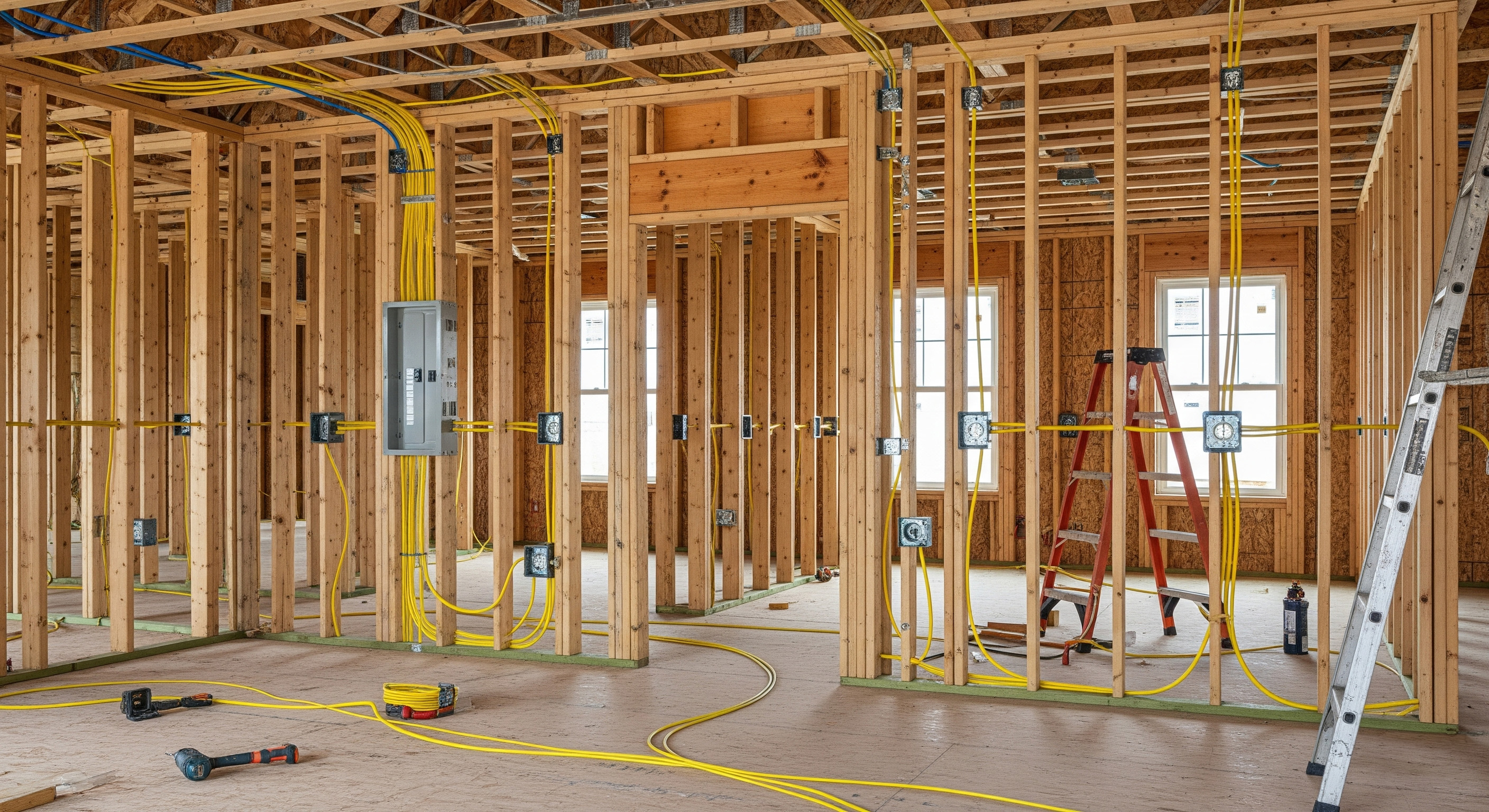
Frequently Asked Questions about Electrical Rough In Inspection
What is examined during an Electrical Rough-In Inspection?
During an electrical rough-in inspection, an inspector checks the placement, wiring, and grounding of all electrical components, including outlet boxes, junction boxes, switch boxes, service panels, and recessed lighting components. They make sure the components are installed at the right height, secured to the structure correctly, and conform to the local electrical code.
At what stage of construction is a Rough-In Electrical Inspection usually conducted?
The rough-in electrical inspection typically occurs after the building is enclosed, but before the insulation and finish materials are installed. This means it usually happens after the roofing and wall structure are in place, and after all the electrical wires are run through the walls, but before any covers are placed.
What would cause an Electrical Rough-In Inspection to fail?
An electrical rough-in inspection may fail if there are any improper installations, violations of the electrical code, or safety hazards. This could include incorrect wire sizes for the intended load, improper grounding, improperly spaced outlets, or the use of non-compliant equipment or materials. Also, not adhering to local building codes or national electrical codes can result in failure.
If the Rough-In Electrical Inspection fails, what are the next steps?
If the electrical rough-in inspection fails, the inspector will provide a list of specific corrections that need to be made. The electrical contractor will need to make those corrections and then request a re-inspection. This process of correction and re-inspection can continue until the installation is compliant with the code.
How can you ensure a successful Electrical Rough-In Inspection?
The best way to ensure a successful electrical rough-in inspection is to follow the national electrical code, and any local building codes or regulations, closely during the installation process. It can also be helpful to double-check your own work or have another experienced electrician peer-review your work before scheduling the inspection.
Can I perform the Electrical Rough-In Inspection myself?
While it's crucial to check your work as you go and before the inspector arrives, you are unlikely to meet legislative requirements without an official inspection carried out by a qualified authority. This professional inspection is a part of the process in obtaining a permit for your project. It's about safety - not just ensuring the work is correct but potentially saving lives by minimising the risk of electrical fires.
Pros of Electrical Rough-in Inspection
Assurance of Correct Installation
High Quality Standards
The inspection of electrical rough-ins ensures that all the electrical components and wirings in a building are installed properly and conform to the industry's quality standards. This guarantees that your electrical systems run efficiently, safely, and have a longer service life.
Compliance with Building Codes
An electrical rough-in inspection verifies that your electrical installations are in alignment with the local, regional, or national building codes. This reduces the risk of potential code violations, which could lead to hefty fines or legal challenges.
Prevention of Electrical Faults
Routine inspection of electrical rough-in can help detect any faulty or incorrect installations early on. This allows the opportunity to rectify any issues before they escalate into major problems, such as short circuits, power outages, or even building fires.
Safety
Mitigation of Electrical Hazards
By thoroughly inspecting the electrical wiring during the rough-in stage, potential safety hazards can be mitigated. Loose connections, incorrect wire sizes, or improper grounding are just a few examples of what can be identified and corrected during this inspection.
Protection Against Electrical Shocks or Fires
Regular inspection of electrical rough-ins safeguards the occupants of a building against risks of electrical shocks, explosions, or fires caused by faulty electrical installations or components.
Cost-Effectiveness
Reduction in Repair or Replacement Costs
Having your electrical installations inspected during the rough-in phase can help detect any issues at an early stage, preventing the need for costly repairs or replacements in the future. This is particularly beneficial in large-scale projects where the financial implications can be substantial.
Increase in Property Value
A successful electrical rough-in inspection can significantly increase the value of your property. This is because it assures potential buyers or renters of the safety and efficiency of the electrical systems in the place.
Cons of Electrical Rough-in Inspection
Interruption of Construction
Delays in Project Completion
Having an electrical rough-in inspection can cause a delay in your construction project. This is because you'll need to halt work until the inspection is completed, which can take several days or even weeks.
Rescheduling of Other Trades
When an electrical rough-in inspection is due, other trades such as drywall or plumbing may need to be rescheduled or paused because once the walls are sealed it's much more difficult to fix any electrical issues discovered later on.
Financial Considerations
Additional Inspection Costs
The cost of a rough-in electrical inspection is an additional expense that you have to budget for during the construction phase. Depending on the size and complexity of your project, these costs can significantly add up.
Potential for Re-Inspection Fees
If your electrical work fails to pass the rough-in inspection, you may be required to fix the issues identified and then pay for a re-inspection, which would increase your project's overall cost.
Complexity and Regulatory Challenges
Complexity of the Process
The process of preparing for an electrical rough-in inspection can be quite complex. It involves a detailed understanding of electrical systems and building codes, which may require hiring an expert electrician or inspector, thus adding to the project's overall cost.
Frequent Changes in Building Codes
Building codes for electrical work can frequently change, making it difficult for individuals or contractors to stay current. If you fail to comply with the latest codes, your electrical work may fail the inspection, leading to unnecessary delays and costs.
Myths and Misconceptions about Electrical Rough-In Inspection
Myth 1: Electrical Rough-In Inspections are the Same for Every Project
One common misconception people have is that all electrical rough-in inspections are the same. This belief leads them to think that they can easily move through the process without much preparation, trusting their understanding of previous projects. However, this is far from the truth.
Each inspection is unique, depending upon factors like the type of building, location, local building codes, and the specific electrical system's complexity. The inspector has a responsibility to review the electrical wiring and components in adherence to the building's context specifically assessing things like the capacity of electrical circuits, wiring safety, and outlet placements.
Myth 2: Any Electrician Can Carry Out an Electrical Rough-In Inspection
The truth is, not all electricians are qualified or allowed to carry out an electrical rough-in inspection. This inspection requires comprehensive knowledge of local building and electrical codes, extensive experience, and the right certification from recognized bodies.
Most times, these inspections are carried out by county or municipality inspectors or certified third-party inspection services. So, while an electrician's skills are critical for the installation process, they alone may not be authorized to approve the work in an official capacity.
Myth 3: Passing an Electrical Rough-In Inspection Guarantees Future Electrical Safety
While a successful inspection indicates that your electrical system adheres to the current safety standards and building codes, it doesn't foresee potential issues or guarantee long-term performance.
Electrical systems require regular maintenance, and various factors like poor maintenance, wiring degradation, and unforeseen usage demands can cause future problems.
Myth 4: Failing an Inspection Means the Whole System is Wrong
A failed inspection can seem daunting, but it doesn't necessarily mean the entire electrical system is faulty. Sometimes, the failure could be due to a small oversight or a single component that doesn't meet code. After issuing a failure, inspectors generally provide a detailed list of code violations that must be addressed before the system can be approved.
Myth 5: You Can Ignore the Electrical Rough-In Inspection
Electrical rough-in inspections are not optional. In most regions, the law requires these inspections for new buildings or during substantial renovations to ensure safety and code compliance. Skipping the inspection can lead to heavy fines, legal consequences, and potential insurance invalidation.
Myth 6: You Can Proceed after Failing an Electrical Rough-In Inspection
Some might assume that they can continue with their construction or renovation work despite failing an electrical rough-in inspection. However, this is not valid. It's mandatory to address all the violations identified and to have the project re-inspected and approved before proceeding with further construction phases.
Myth 7: The Process of Electrical Rough-In Inspection is Prolonged and Tedious
With proper preparation and understanding of the requirements, the process can be rather quick and hassle-free. Before the inspection, make sure to review the local building codes and ensure that your plan adheres to them. Also, take the time to prepare your site so that all the necessary points like electrical boxes, cables, and wire runs are easily accessible to the inspector.
Unlike popular belief, the purpose of these inspections is not to disrupt but to ensure the safety and proper functioning of the building's electrical system for everyone's well-being. Ultimately, a proper understanding of the electrical rough-in inspection process can help debunk these myths and pave the way for a safer construction or remodeling project.
Summary
So, after all said and done, it's safe to say that there's more to an electrical rough in inspection than meets the eye. It's not just about checking wires or making sure everything looks neat. It's about ensuring that the electrical system in a building is safe, functional, and ready for final touches. The benefits of conducting this process make it an integral part of any electrical installation.
Moreover, think of an electrical rough in inspection as just another step in the process of creating a safe and efficient electrical system. The whole goal is to catch and fix any mistakes before they become major issues down the line. It's about setting the stage properly so that everything that follows is smooth sailing.
Finally, the takeaway here is that the electrical rough in inspection matters. Though it might seem like a minor thing, it's instrumental in avoiding potential electrical fires in the future. The inspection is your friend, a professional helping hand ensuring the electrical work done on your house or commercial space is up to code, safe and efficient. It's definitely a crucial step that shouldn't be overlooked!
About Sagan Electric
Sagan Electric is a top-tier Electrical Contractors business located in the heart of Sacramento, CA. Our company has been faithfully servicing customers throughout Sacramento for several years, and we've earned a sterling reputation for providing high-quality workmanship, unparalleled customer service, and exceptional reliability. We specialize in all aspects of electrical contracting, from installations and repairs to upgrades. Our team consists of highly skilled professionals that have the experience and knowledge to handle any electrical project, no matter its size or complexity. We strive to go above and beyond to meet our customer's needs, whether it's a small home project or a large commercial job. Trust Sagan Electric for all your electrical needs. You'll be glad you did!
Tags: electrical, rough in, inspection,
